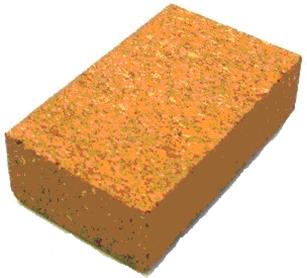Finishes and Finishing
Wood finishing of any type requires correct surface preparation. The finish is only as good as the surface underneath
Surface Preparation
- All surfaces must be smooth and clean.
- Any faults will show more clearly when transparent finish is applied.
- It is usually easier to prepare interior surfaces before assembly.
 Procedure
Procedure
- Punch all nails below the surface with a nail punch and hammer.
- Where necessary, plane surfaces flush with a smoothing plane.
- Fill nail holes and defects with putty.
- Sand smooth
Sanding
 Start with a coarse grade, and follow with finer grades in order. Use a cork block
Start with a coarse grade, and follow with finer grades in order. Use a cork block
- to obtain a flat surface
- to avoid rounding corners
- for more economical use of abrasive paper Always sand along the grain and never across the grain.

 Stopping (putty)
Stopping (putty)
- Nail holes, borer holes and other defects all need stopping.
- Use a special putty knife or your finger – never use a chisel, marking knife or rule.
- Leave slightly proud to allow for shrinkage.
- Sand off with fine abrasive paper.
Staining
Reasons for staining
- To change the colour of the timber.
- To match one article with another.
- To obtain a uniform colour on all pieces in a project.
Abrasive paper
Abrasive papers are made of crushed and carefully graded abrasive material glued to a strong paper backing (Cloth is used where greater strength and flexibility is required, e.g., for machines)
Some abrasive materials used are:-




Glass 2) Garnet 3) Aluminium Oxide 4) Silicon carbide
Silicon carbide (waterproof) paper is used when cutting back finishes between coats.
Grades
The crushed abrasive material is graded, by passing through silk screens, into various grit sizes (grits per square inch), e.g., 60 grit passes through a screen with 60 x 60 holes per square inch.
Grade |
Grit size |
Use |
Coarse |
40 |
Rapid removal of material |
Medium |
60, 80 |
Sanding bare wood in preparation for finishing, |
Fine |
100, 120, 180 |
Final sanding of bare wood in preparation for finishing, |
Very fine |
240, 320 |
Sanding finishes between coats |
Finishes
Purpose
- Protection: against moisture, chemicals, grease and discolouration
- Decoration: clear finishes add to the natural beauty of the timber
- Hygiene: ease of cleaning
Types of finishes
 Wax (beeswax, carnauba)
Wax (beeswax, carnauba)
Qualities: Transparent, easily applied, requires vigorous rubbing, not resistant to heat or moisture, the lustre is improved with more coats and more rubbing.
Application: rub on with cloth, allow to dry and then rub vigorously with a clean cloth.
 Nitrocellulose lacquer Qualities:
Nitrocellulose lacquer Qualities:
Dries quickly, moderately hard, gives a high lustre.
Application:
- Can be brushed or sprayed onto a surface.
- Do not rebrush over semi-dried lacquer.
- Usually requires 3-4 coats
- Must be cut back between coats using 400 wet and dry paper.
- Surface may be polished with finishing spirit.
- Do not use without ventilation.
- Clean brushes in thinners.
 Polyurethane Qualities:
Polyurethane Qualities:
Brushes on smoothly with care, slow drying, quite hard, good resistance to household acids, heat and moisture, available in gloss, satin and matt finish
Application:
- Brush carefully, finishing with light pressure with the tip of the brush.
- Apply finish in a dust free environment.
- Rub back between coats with 400 wet and dry paper
- Clean brushes in turps.
 Scandinavian Oil Finish Qualities
Scandinavian Oil Finish Qualities
- Used where a natural, low lustre, oil finish is required.
- Easy to apply
- Maintenance is easy – rubbing over with an oily rag will restore and deepen the lustre.
Application
- Seal the surface with a matt Polyurethane finish.
- When dry, use very fine steel wool (000 grade) to apply a liberal coating of Scandinavian oil.
- Make further applications, working along the grain at all times.
- Wipe of excess oil along the grain with a clean, soft cloth.
 Brush Use and Care
Brush Use and Care
- Always brush along the grain.
- Take care to avoid runs – brush towards the end of the surface.
- Apply coats evenly and thinly.
- Do not dip the brush too far into the finish being used.
- Clean brushes thoroughly immediately after use.
- Use appropriate solvent to clean brushes
Finish |
Solvent |
Nitrocellulose lacquer |
Thinners |
Polyurethane |
Turps |
Water based finish |
Water |